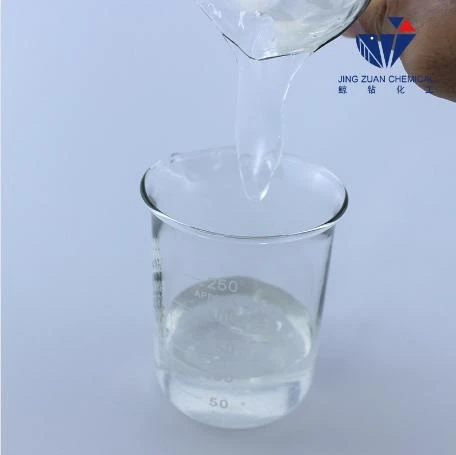
Nën . 24, 2024 23:42 Back to list
hpmc uses in detergent
The Role of HPMC in Detergent Formulations
Hydroxypropyl Methylcellulose (HPMC) is a cellulose ether that has gained significant recognition in various industries due to its versatile properties. One of the most intriguing applications of HPMC is in the formulation of detergents. As the demand for effective cleaning agents continues to grow, the incorporation of HPMC in detergent formulations presents a promising solution to enhance performance, stability, and consumer appeal.
Overview of HPMC
HPMC is a non-ionic polymer derived from cellulose, which is a natural polymer sourced from plant cell walls. Its chemical structure allows it to be modified to create a range of products with differing characteristics. HPMC is widely used in pharmaceuticals, food, and cosmetics, but its role in the detergent industry is particularly noteworthy. Its solubility in water and ability to form gels makes it an ideal candidate for improving various aspects of detergent formulations.
Functionality in Detergents
1. Thickening Agent One of the primary uses of HPMC in detergent formulations is as a thickening agent. HPMC can increase the viscosity of liquid detergents, which not only enhances the product’s texture but also improves its usability. Consumers often prefer thicker products as they tend to feel more luxurious and provide a perception of higher quality. Furthermore, increased viscosity can reduce spillage and improve the dispensing of the product.
2. Stabilization HPMC plays a critical role in stabilizing detergent formulas. It can help prevent the separation of ingredients, ensuring a homogenous mixture. In liquid detergents, for example, the inclusion of HPMC can maintain the stability of the emulsion, which is crucial for ensuring product effectiveness. This stability also extends the shelf life of the product, enhancing its marketability.
3. Suspension of Particles In powdered and granular detergents, HPMC aids in suspending various components, such as enzymes and surfactants. Its ability to modify the flow properties of the formulation ensures that these active ingredients are evenly distributed throughout the product. This uniformity is essential for consistent cleaning performance, as it ensures that the active ingredients are available whenever the detergent is used.
hpmc uses in detergent

4. Controlled Release HPMC is also utilized for its controlled-release properties. In some formulations, HPMC can encapsulate active cleaning agents, allowing them to be released gradually during the washing process. This feature enhances the efficacy of the detergent, as it can provide sustained cleaning action over time, making it particularly useful for concentrated detergents.
5. Film-Forming Agent HPMC can function as a film-forming agent, which is particularly valuable in laundry detergents. When washed items dry, the HPMC can leave a thin, protective film that can minimize re-soiling and improve the appearance of fabrics. This property enhances consumer satisfaction, making garments look cleaner and fresher for longer periods.
Environmental Considerations
With growing consciousness regarding environmental impacts, HPMC offers a favorable profile. As a naturally derived polymer, HPMC is biodegradable, making it an attractive alternative to synthetic thickening agents that may not break down as easily. Additionally, the use of HPMC can reduce the overall need for phosphates and other harsh chemicals in detergent formulations, aligning with global trends towards sustainable and eco-friendly products.
Consumer Appeal
Incorporating HPMC into detergent formulations can significantly enhance the consumer experience. Products that offer improved performance, stability, and sensory characteristics are more likely to attract customers. By utilizing HPMC, manufacturers can create innovative formulations that stand out in a competitive market, ultimately driving sales and customer loyalty.
Conclusion
HPMC is an invaluable ingredient in the formulation of detergents, contributing to functionality, stability, and consumer appeal. Its versatility as a thickening agent, stabilizer, and film former elevates the performance of both liquid and powder detergents. With an emphasis on sustainability and consumer satisfaction, the role of HPMC in detergents is poised to expand, promising advancements in cleaning technology while addressing environmental concerns. As the industry continues to innovate, HPMC will likely remain at the forefront of detergent formulation, paving the way for a cleaner and more sustainable future.
-
Versatile Hpmc Uses in Different Industries
NewsJun.19,2025
-
Redispersible Powder's Role in Enhancing Durability of Construction Products
NewsJun.19,2025
-
Hydroxyethyl Cellulose Applications Driving Green Industrial Processes
NewsJun.19,2025
-
Exploring Different Redispersible Polymer Powder
NewsJun.19,2025
-
Choosing the Right Mortar Bonding Agent
NewsJun.19,2025
-
Applications and Significance of China Hpmc in Modern Industries
NewsJun.19,2025







